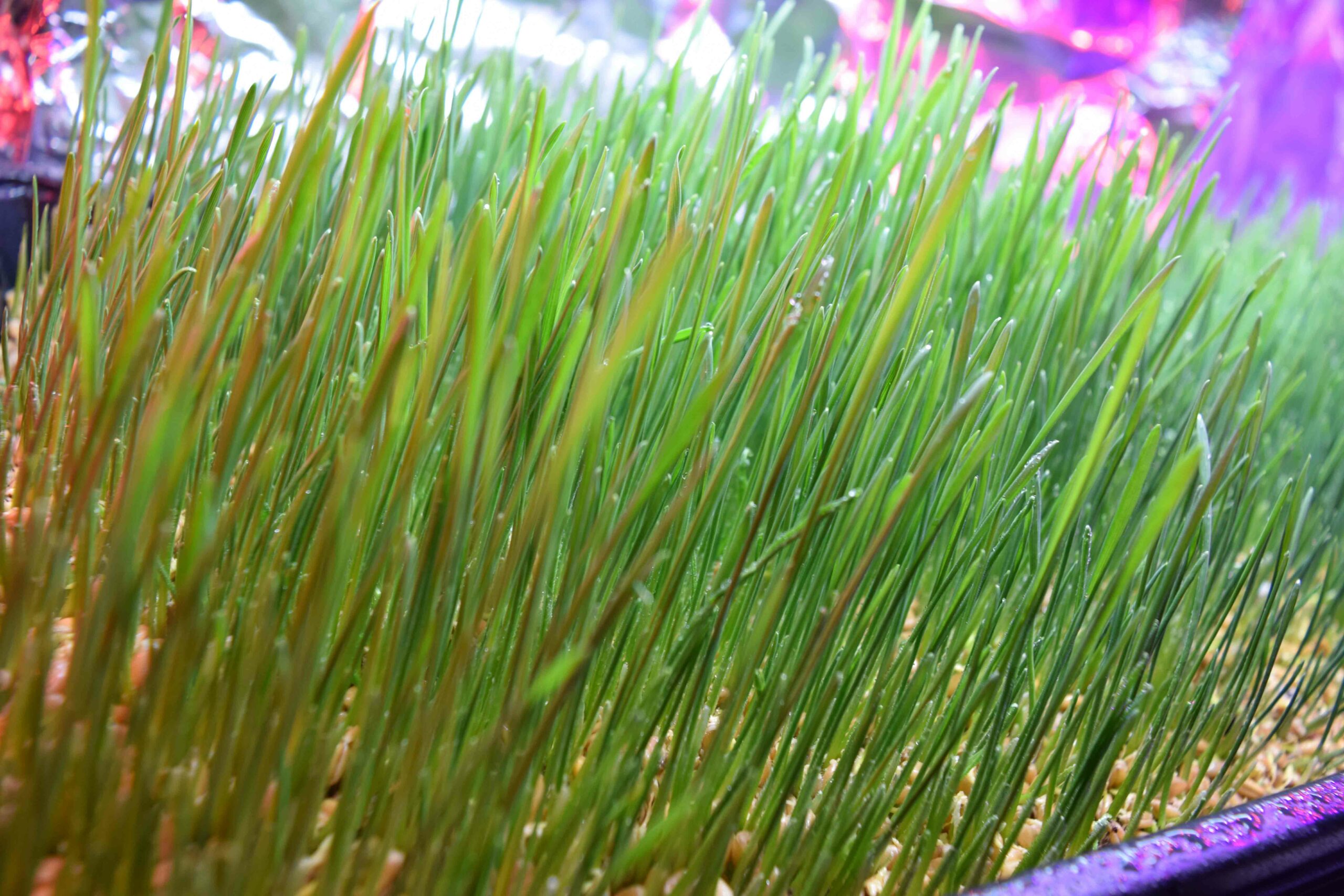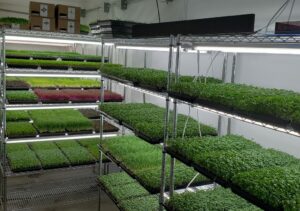
What are Microgreens?
First off what is the difference between sprouts and microgreens? Sprouts are fully germinated seeds, the newborn of the plant world. Both start from seed, sending out shoots and first roots. Sprouts are seeds that germinate by being soaked and rinsed in water, microgreens are grown in soil or some sort of media. You cut microgreens leaving the root in that media, whereas with sprouts you eat the whole plant. Here is a quick summary breakdown of the difference:
Sprouts
- Sprouts are germinated in water and rinsed approximately twice per day
- Both the seed and the seedling is consumed
- Harvested within 4-6 days
- Common types of sprouts: green leaf, mung bean, lentil, alfalfa, radish, sunflower, pumpkin, wheat, chickpea, broccoli
Microgreens
- Consume edible leaves and stem in the cotyledon growth stage (when the first two to four leaves appear)
- Harvested within approximately 1-2 weeks
- Eat the stem and green only, not the seed, chop off at soil level
- Gets added nutrients from the soil, experiences more photosynthesis
- Common types of microgreens: kale, arugula, beet greens, onions, radish greens, watercress, chard, bok choy, cilantro, basil, chervil, parsley, chives
 Microgreens can be harvested when the germinated seeds have developed tiny roots and at least their first true leaves. They have similar health benefits to sprouts, but greater nutritional value. You can add minerals to the seed raising mix to boost the nutrient value and flavor. These young seedlings are harvested smaller than baby salad leaves.
Microgreens can be harvested when the germinated seeds have developed tiny roots and at least their first true leaves. They have similar health benefits to sprouts, but greater nutritional value. You can add minerals to the seed raising mix to boost the nutrient value and flavor. These young seedlings are harvested smaller than baby salad leaves.
Benefits to Microgreens?
- Very Quick to grow: from ‘seed to feed’ in just 1-3 weeks depending on what you choose to grow
- A high yield to space ratio – you can grow an incredible number of plants in a tiny area.
- Minimal cost, time, and effort required for a healthy and yummy harvest of organic greens.
- Ideal for urban living and people with little room or time for a garden.
- Simple to get started. All you need is access to good light, a tray or suitable shallow container, water, and growing media.
- Year-round. Since microgreens are grown mostly indoors you can produce fresh living greens year-round and in different climates.
- No need for a garden space. You can grow microgreens indoors on a sunny windowsill or kitchen bench. They are also suited to a mini greenhouse, or outdoors on your balcony, covered porch, or shade house.
- Nutrient-dense food. Microgreens contain digestible vitamins, minerals, and phytonutrients that provide a wide variety of nutritional health benefits. They are packed with flavor, color, texture, living enzymes, and nutrients.
Adding microgreens to your salad gives it an extra punch of flavor and nutrition. The larger, mature greens will also provide you with the right amount of fiber and water for proper digestion. You can even grow extra to be dehydrated and ground. Ground microgreens can be used as a seasoning or even encapsulated to give you a daily dose of veggies.
As a hobby or as a business microgreens is a great way to grow your own. What does it take to grow microgreens? Nothing much, we’ll touch upon this in our next post.
Leave a Reply